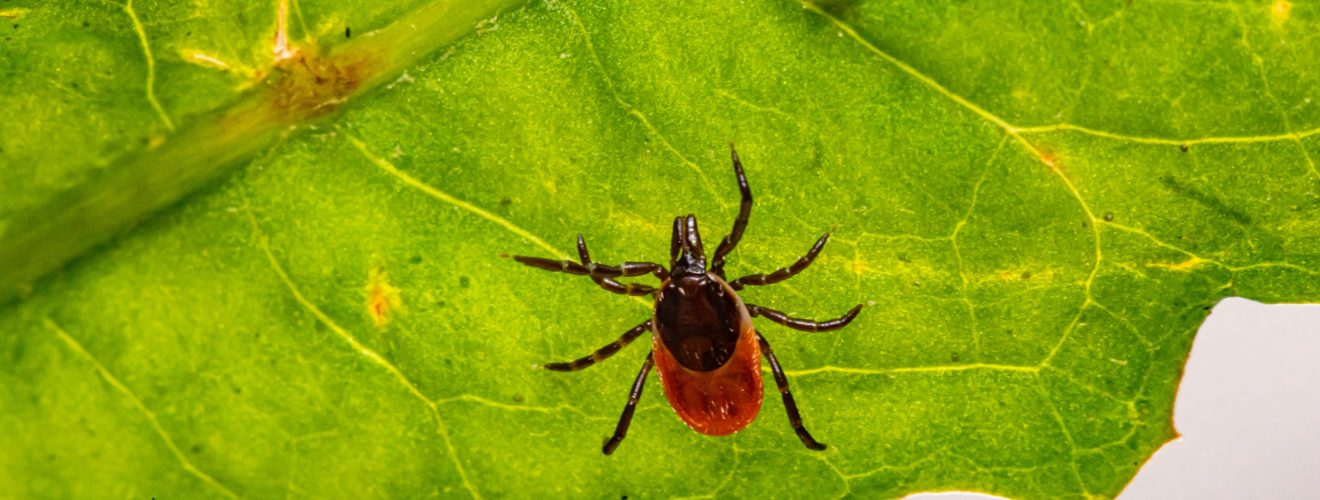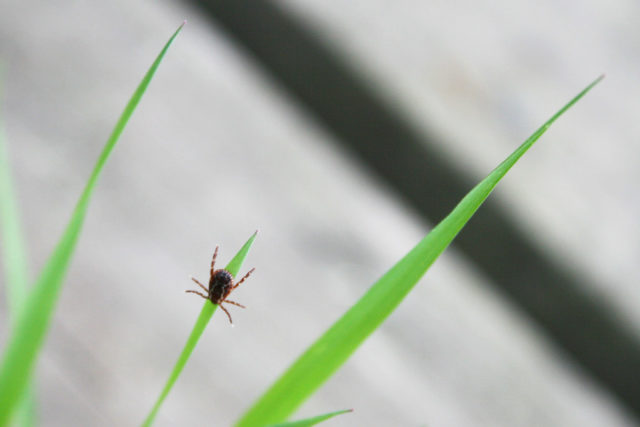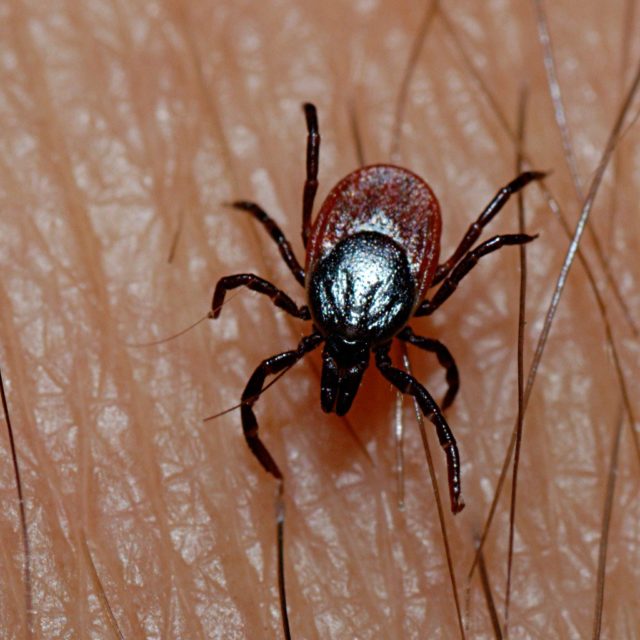Ticked! What makes viruses tick?

Spring is here and we all know what that means; it’s tick season! Not the season you tick off all the adventurous goals that you’ve been planning during the pandemic, but rather the season when you are most likely to become infected with a tick-borne virus in Scotland.
Ticks are small parasitic insects commonly found in areas of high elevation and wooded topography – which includes the beautiful Scottish landscape. Whilst ticks may not be your best hiking companions, they are a diverse family of creatures with roughly 850 species discovered worldwide, many of which are known to spread a number of viruses to wildlife, humans, and livestock.

Image by USFWS Midwest Region on Flickr
Being hematophagous ectoparasites (blood-eating parasites living outside the host), ticks are always on the lookout for a fortnightly blood relationship with a host. Ticks generally have a four-stage life (egg > larvae > nymph > adult) and require blood throughout this life cycle. Due to the enormous diversity of this species, ticks have varying lifespans ranging from 3 months to 3 years; their estimated lifespan is influenced by environmental conditions, temperature, and humidity. However, it is mainly during their feeding sessions that they are most likely to spread diseases.
Unlike fleas, ticks are patient guests that wait in grass and bushes for targets to drop themselves on. Using their strong sense of smell – specifically towards the carbon dioxide which we exhale – they climb to the top of a blade of grass or plant and stick their front legs up in the air, waiting for the scent of a victim walking by. 1
The most common species you could encounter in Scotland is the sheep tick (Ixodes ricinus), perhaps more commonly known as the wood tick or castor bean tick2. Although sheep ticks are often ignored for their mere size and painless bites, they can grow up to 11 mm long upon feasting on a blood meal and are capable of spreading a number of pathogens to its mammalian hosts – a one-sided relationship you might want to avoid!
Tick-borne diseases are mainly caused by pathogens transferred during tick bites such as bacteria, protozoa, and viruses. These pathogens are usually introduced into a tick’s body when they feed on infected birds and mammals. A variety of diseases including Lyme disease, relapsing fever and typhus fever can occur when pathogens are transferred to humans from the bites of infected ticks.
Lyme disease is the most common tick-borne disease, accounting for roughly 42,743 cases in the US in 2017. Fortunately, the incidences in the US have since decreased down to 33,700 cases in 2018.3

However, in the UK, the incidences of Lyme disease have progressively tripled between 2001 and 2012, prompting an urgent need to raise awareness of its early signs and symptoms. According to the NHS, one of the early symptoms of Lyme disease includes a circular red skin rash around a tick bite, appearing up to three months after being bitten by a tick and usually lasts from a few weeks to several months4.
While it might sound easy to assume ticks aren’t capable of spreading particularly harmful diseases to mammalian hosts, less known, life-threatening tick-borne diseases such as tick-borne encephalitis (TBE), have also seen infection rates rise: the incidence of TBE has increased by 400% in Europe over the last three decades.
Tick-borne encephalitis is known to affect a range of hosts including birds, humans, and rodents and can also spread from animals to humans, with ruminants and dogs being the principal source of infection for humans.5
There is currently no specific antiviral treatment for this condition, which increases the risk of long-lasting neuropsychatricatic effects on the central nervous system. Statistics show long-lasting effects occur in a fifth of infected individuals6. Currently, treatment consists of an interplay between supportive care and pain relief medication – corticosteroids (painkillers) are currently prescribed.
In Scotland, the growing need for awareness of this harmful tick-borne disease has been further emphasized after its first emergence in England in 20197. Public engagement represents one of the most important aspects of communicative science. It has never been this imperative to raise awareness on public health issues from vaccine safety to the transmission of harmful diseases.
Every year, the UK celebrates Tick Bite Prevention Week8 from 24th to 30th March, and recently the Brennan Lab9 at the MRC Center for Virus Research within the University of Glasgow has undertaken a public engagement project to educate Scottish communities of the high risks of infection by a tick-borne virus. Activities under this project would include developing a citizen-science project, coordinating with outdoor working groups, hunting groups, and professional bodies to uncover the health issues associated with tick-borne viruses to the public.
Our desire to explore the outdoors must not be met with fear of tick-borne diseases, but rather with increased awareness of precautionary measures that can be taken to reduce the chances of ‘getting ticked’ in order to minimise the possibility of being infected. This could include wearing light coloured clothes, using a tick-repellant, hiking on less-grassy paths, or even doing a self-pat after a hike to ensure you haven’t had any ectoparasitic visitors. There is no need to panic, as not all ticks can spread diseases; however, as a few infected ticks are capable of transferring some of the aforementioned infectious pathogens, it is important to be aware of tick-borne diseases. Interested to learn more? Explore the European Centre for Disease Prevention and Control website to learn more!
This article was specialist edited by Dzachary Zainudden and copy-edited by Holly Leslie
References
- https://vitacanis.co.uk/tick-bite-prevention-week/
- www.undiscoveredscotland.co.uk/usscotfax/outdoors/ticks.html
- www.cdc.gov/ticks/data-summary/index.html
- www.nhs.uk/conditions/lyme-disease/
- www.en.wikivet.net/Tickborne_Encephalitis_Virus
- https://www.who.int/health-topics/tick-borne-encephalitis
- https://www.bbc.com/news/health-50206382
- https://www.scottish-orienteering.org/news/tick-bite-prevention-week/
- https://www.brennanlab.co.uk/










